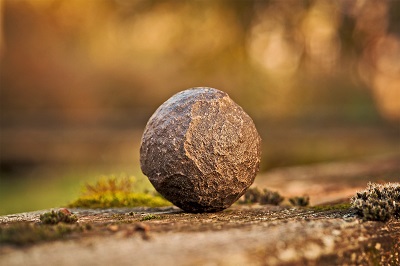Ball’s Pyramid is the world’s tallest volcanic stack rising from the Tasman. It is part of the Lord Howe Island Marine Park, which is recorded by UNESCO as a World Heritage Site of global natural significance. The pyramid does not receive many visitors due to its remote location, but scuba diving, sport fishing, and climbing are all available.
Ball’s Pyramid is an erosional remnant of a shield volcano and caldera that formed about 6.4 million years ago. It lies 20 kilometres (12 mi) southeast of Lord Howe Island in the Pacific Ocean. It is 562 metres (1,844 ft) high, while measuring only 1,100 metres (3,600 ft) in length and 300 metres (980 ft) across, making it the tallest volcanic stack in the world. Ball’s Pyramid is part of the Lord Howe Island Marine Park in Australia.
Ball’s Pyramid is composed of nearly horizontally-bedded basalt lava flows, the remnants of a volcanic plug formed in a former vent of a volcano. Basalt is a common rock that is typically formed by melting of the Earth’s mantle. Basalt has also been found on the Earth’s Moon, Mars, Venus, and even on the asteroid Vesta.
After the eruption of the shield volcano, the slopes became truncated (top was removed) to form a broad submarine shelf (see diagram below).
Ball’s Pyramid looks like a place where nothing could survive, but isn’t devoid of life. It is home to the rarest insect in the world, the Lord Howe stick insect, famous for being big as a human hand, a species previously thought to be extinct. The Europeans labeled it a “tree lobster” because of its size and hard exoskeleton. It’s 12 centimeters long and the heaviest flightless stick insect in the world. Local fishermen used to put them on fishing hooks and use them as bait.

Not many boats are surveyed to take divers there and so the rock remains untouched by human interference. The weather doesn’t let too many get there either. In some divers’ opinions Lord Howe Island’s Balls Pyramid is the best dive site bar none in Australia. You are “bombed” by wahoo during safety stops, kingfish, dolphins and bronze whalers all regulars as well as large bull rays – there’s also a unique Lord Howe Island batfish – not found anywhere else in world.
The island is volcanic so most of the dive sites are craggy and uneven, which makes excellent swim-throughs, tunnels and bommies. The Great Equatorial Current, warm and rich in nutrients mix with the cooler waters of the Tasman Sea, bringing impressively large and abundant fish life to these oceans. The combination of these conditions, coupled with the terrain, makes pretty amazing diving and above water sights. The whole island is World Heritage listed so it’s a conservationist’s dream.


